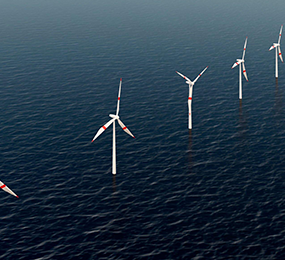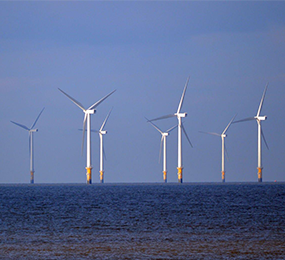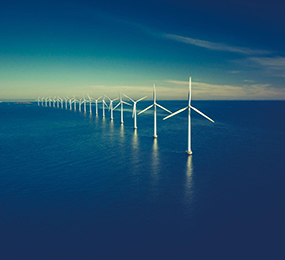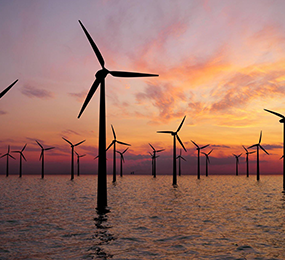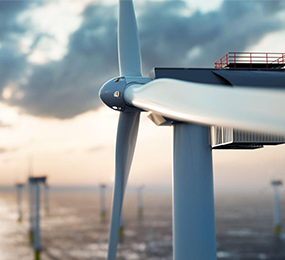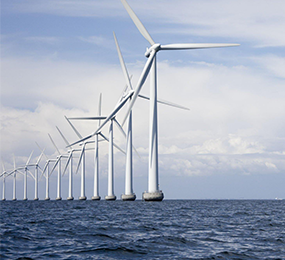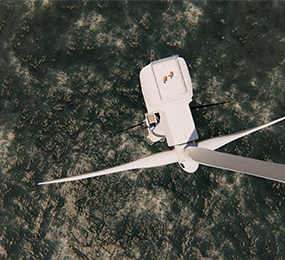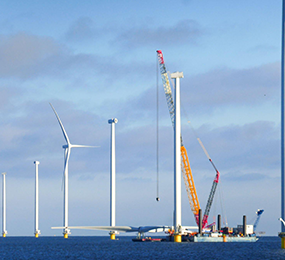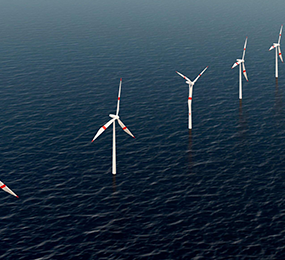The Environmental Impacts of Floating Wind Farms in Europe
Floating wind farms have emerged as a promising solution to harness the vast wind energy resources available in Europe's offshore waters. Unlike traditional fixed-bottom offshore wind farms, which require shallow seabeds, floating wind farms can be deployed in deeper waters, opening up new areas for wind energy development. While the growth of floating wind farms presents significant opportunities for renewable energy generation, it is essential to consider the potential environmental impacts associated with these projects.
1. Marine Ecosystems and Biodiversity:
One of the primary concerns regarding floating wind farms is their potential impact on marine ecosystems and biodiversity. The installation and operation of wind turbines, including the construction of foundations and transmission infrastructure, can cause disturbances in the marine environment. These activities may lead to the displacement or disruption of marine species and habitats, affecting the overall biodiversity and ecological balance. Careful site selection and comprehensive environmental impact assessments are crucial to minimize the impact on sensitive marine ecosystems.
2. Avian Species and Migration Routes:
Birds, particularly seabirds and migratory species, are vulnerable to collision risks with wind turbine structures. Proper consideration of avian flight paths and migratory routes is essential during the planning and design phases of floating wind farms. Employing avian radar systems, implementing monitoring programs, and adopting turbine configurations that reduce the risk of bird collisions can help mitigate the impact on avian species.
3. Underwater Noise and Marine Mammals:
The construction and operation of floating wind farms can generate underwater noise, which may affect marine mammal populations. Species such as whales, dolphins, and seals rely on sound for communication, navigation, and feeding. High levels of underwater noise can disrupt these activities and potentially lead to habitat displacement or behavioral changes. Implementing noise mitigation measures, such as acoustic monitoring and using quieter installation techniques, can help minimize the impact on marine mammal populations.
4. Visual and Landscape Impacts:
Floating wind farms are visible structures on the horizon, and their presence can alter the visual landscape of coastal areas. Some individuals may perceive these structures as visual intrusions or detractors from scenic views. Balancing the need for renewable energy development with visual aesthetics is a challenge that requires careful consideration. Stakeholder engagement, landscape planning, and innovative design approaches can help mitigate visual impacts and ensure the acceptance of floating wind farms within local communities.
5. Cable Routing and Seabed Disturbance:
The installation of submarine power cables to connect floating wind farms to the onshore grid may involve seabed disturbance and impact benthic habitats. Proper cable routing and installation techniques, including burial or protection measures, can help minimize these disturbances and reduce the impact on marine ecosystems. Additionally, regular monitoring and maintenance of cables are necessary to address any potential leaks or damages that could affect the marine environment.
6. Socioeconomic Considerations:
While this article focuses on the environmental impacts of floating wind farms, it is essential to highlight the potential socioeconomic benefits associated with these projects. Floating wind farms can contribute to job creation, local economic development, and the reduction of greenhouse gas emissions. The positive environmental impact of displacing fossil fuel-based energy generation should also be considered in the overall assessment of floating wind farms.
In conclusion, the deployment of floating wind farms in Europe presents both opportunities and challenges from an environmental standpoint. It is crucial to carefully evaluate and mitigate the potential impacts on marine ecosystems, avian species, underwater noise levels, visual landscapes, cable routing, and seabed disturbance. Through robust environmental impact assessments, effective mitigation measures, and ongoing monitoring and management, floating wind farms can contribute to Europe's renewable energy transition while minimizing their ecological footprint.
Visit our website to know more: https://www.leadventgrp.com/events/4th-annual-floating-wind-europe/details
For more information and group participation, contact us: [email protected]
Leadvent Group - Industry Leading Events for Business Leaders!


